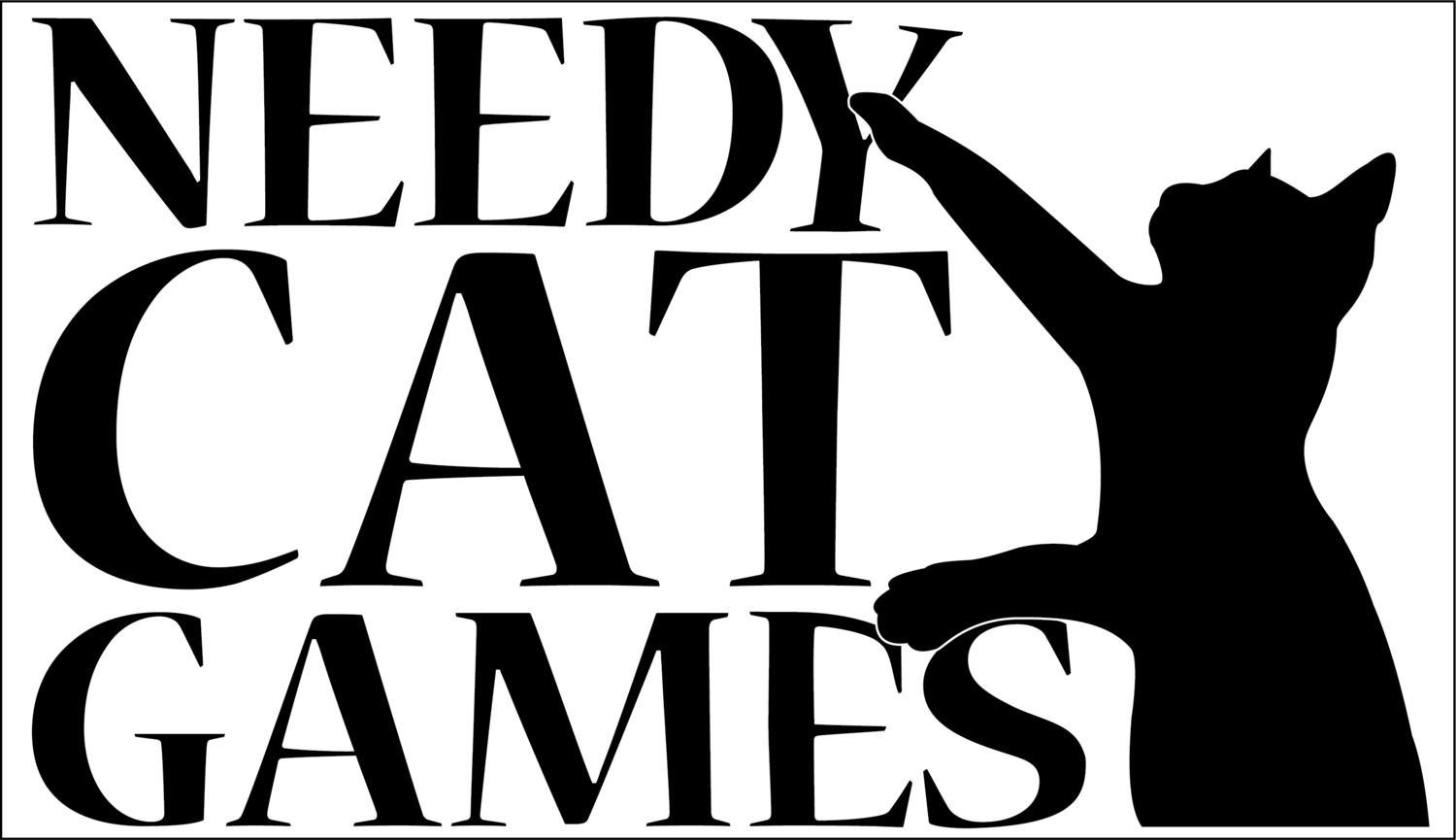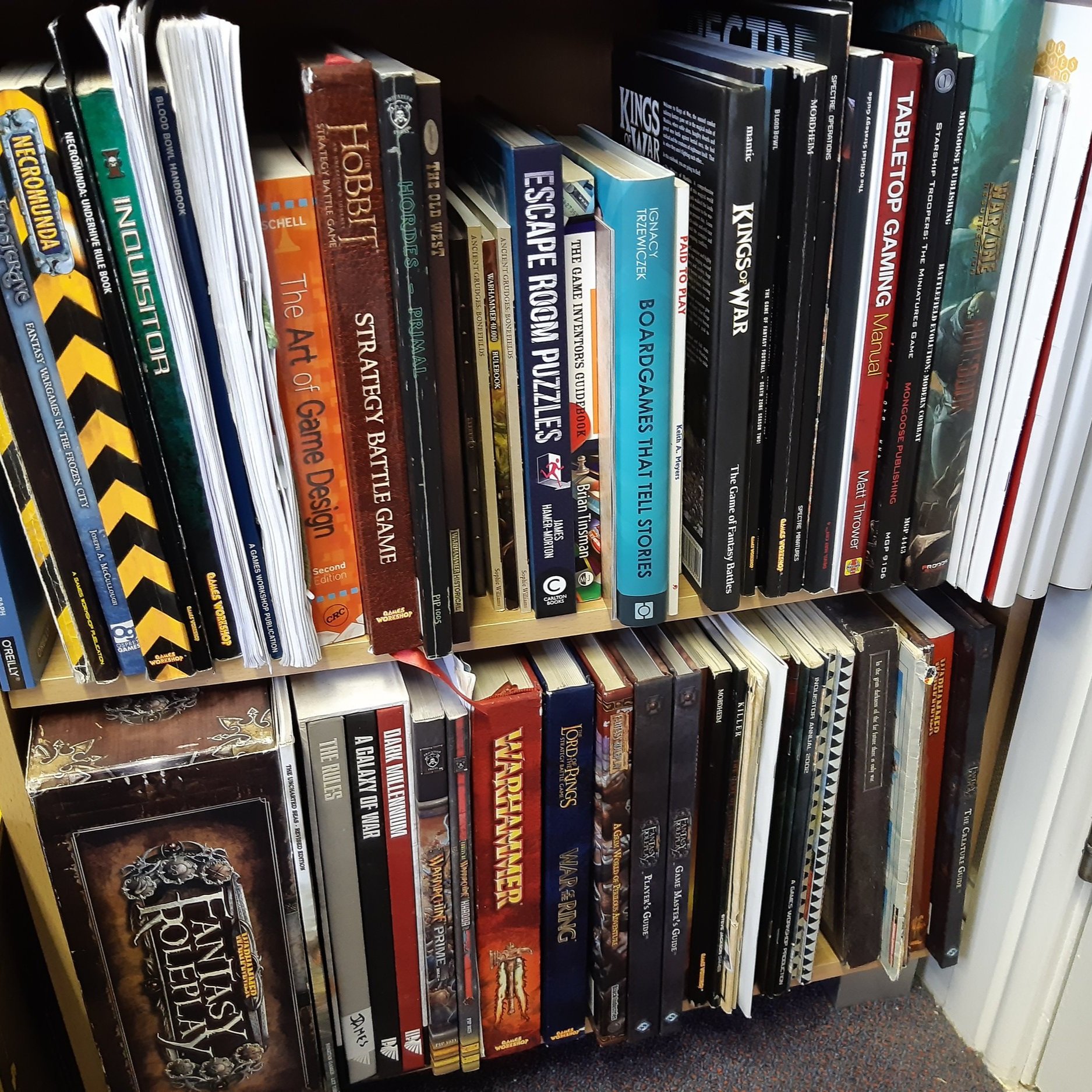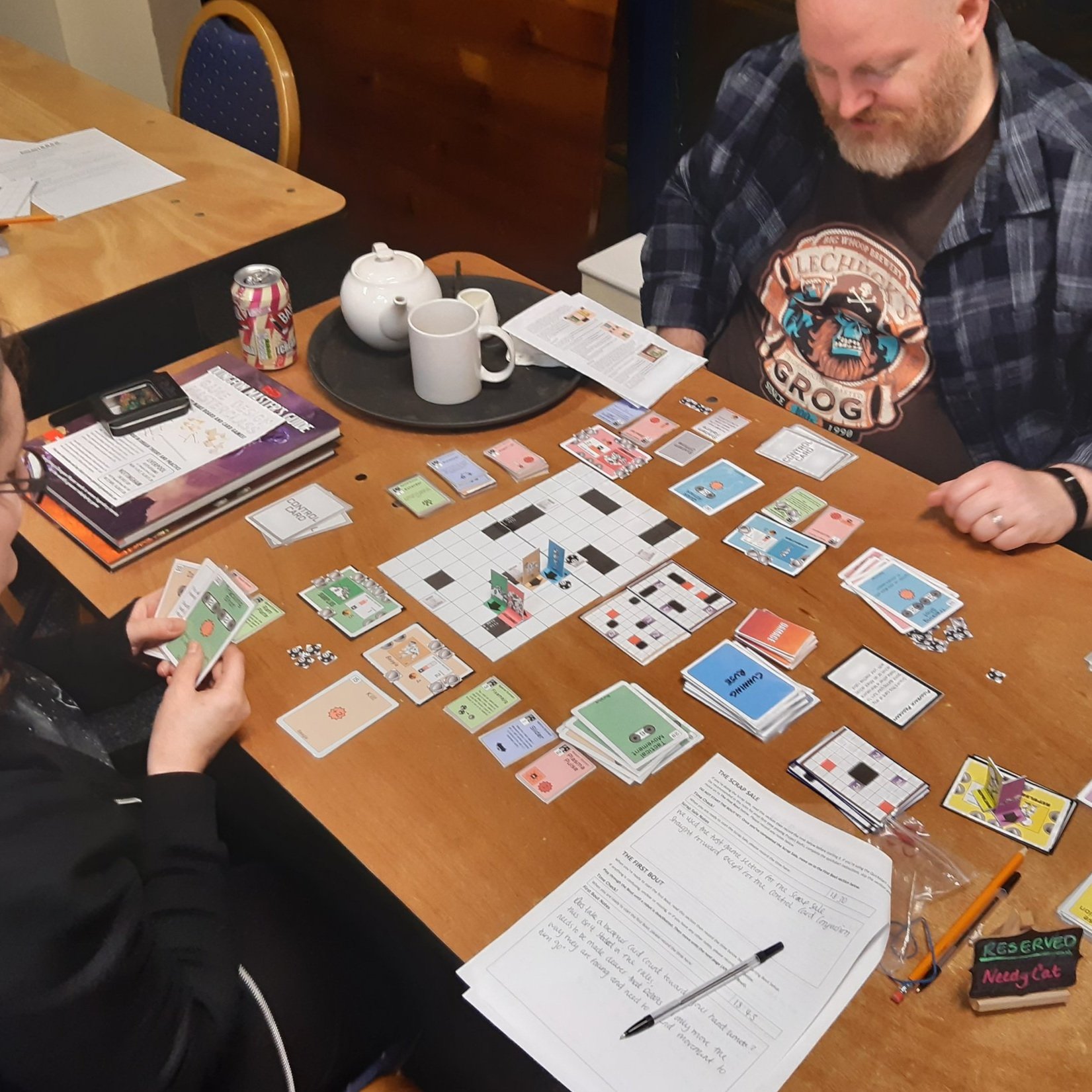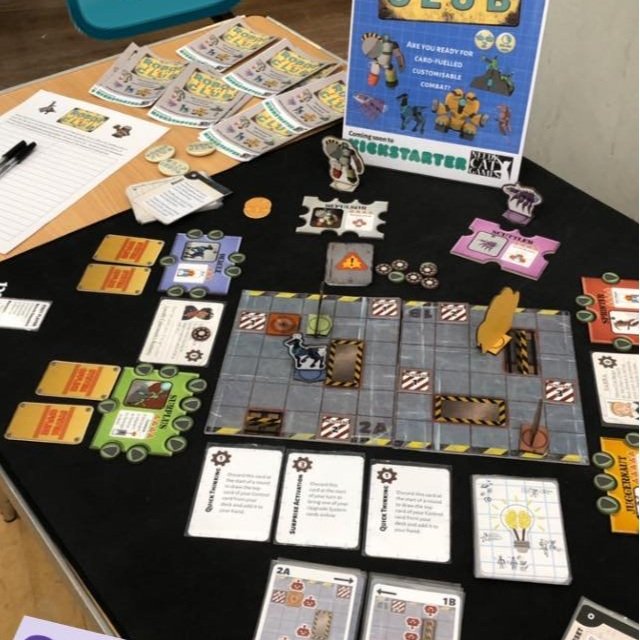design process
Over the past few years we’ve developed a clear structure for designing games. Every project is different, but codifying the different steps within a project helps us communicate clearly, both internally and with our clients.
This page is mainly intended as a static reference point for anyone we’re working with, but it might also be an interesting read for anyone with an interest in game design!
stage 1:
Kickoff
Aim: Set expectations and confirm that the project is going ahead
At this stage, we have a number of discussions (with the client, if there is one) to develop a design brief, which covers things like the concept, theme, player count, play time, target audience, intended price point, etc. We also determine the timeline and set a fee.
We will draft a contract that covers all of the above, and get all parties to sign it to confirm that the project will go ahead.
STAGE 2:
Research
Aim: Gather a series of concepts and reference points to create an overview of the game.
Next, we start researching the project. We’ll look at existing games, source material, relevant media and anything else that seems appropriate. We will create a set of idea boards that will showcase any gameplay ideas, intended mechanics, reference points and so on.
We will compare this to the design brief, and seek approval from the client if there is one.
Stage 3:
Test Build
Aim: Create a limited prototype / demo which showcases core gameplay.
Here, the game starts to take shape. Working from the idea boards, we create an initial (very rough!) prototype, with a basic set of rules. Placeholder mechanics might be used (e.g. “there will be a system for gaining resources, but now just roll a die and take that many”) we won’t consider the start or end of the game.
After some testing, we will develop the prototype into a vertical slice demo, intended to show five to ten minutes of gameplay. We will compare this demo to the brief and seek client approval if there is one.
Stage 4:
Mechanical Build
Aim: Develop the game’s core engine, and create a fully playable prototype of the basic game.
At this stage we develop the test build prototype, replacing any placeholder elements and adding the minimum level of content for a single full playthrough that features all of the core gameplay elements. We will add setup rules and victory / game end conditions, etc. We will also create a rules reference document which covers all of the necessary rules to play. The focus at this stage is mechanics as opposed to presentation.
Once we have a working prototype, we will begin guided testing with external testers, where we will teach them how to play and then observe them to gather feedback, which we will use to refine the game further. At various stages we will check the design brief and seek approval from the client if there is one.
Once we are happy that the game’s core engine is stable, we will proceed to the next stage.
Stage 5:
Full Build
Aim: Complete the development of the game into a full product.
We will start this stage by writing the complete text for the game’s rules manuscript, creating a document (or multiple documents) which both teaches the game and acts as a reference document during play.
We will also complete any missing elements of the game to allow for variety and replayability. Some of these may have been seeded into the Mechanical Build during testing, but the intention here is to complete everything that will be in the final product.
Once this has been done, we will coordinate unguided testing, where people will be given the game for the first time and asked to learn and play using the rulebook, without our help. We will use their feedback to continuously refine the game.
Again, we will check the brief and consult with the client at various stages through testing.
Stage 6:
Handover & Amends
Aim: Hand over the game files and ensure they are fit for purpose.
At this stage, all game files will be handed to the client, publishing partner or manufacturer.
We will make ourselves available to answer any questions or make any amendments to the game files as needed.
That’s the end of our design process! If you’d like to commission us to design a game for you, get in touch. Or if you’d like to learn more about this process, check out our seminars.






